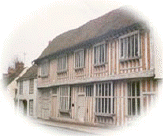
|
Above: The loom in the museum |

|
Material being made on the loom and a shuttle |
||

|
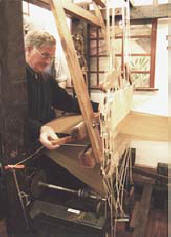
| . |
|
Jack Thornton, who restored the loom to working order weaving in the museum. Jack demonstrates weaving on the loom regularly and encourages visitors to 'have a go!' |
| . |
| . |
|
|
|
|
Although weaving had been carried on for centuries by women to clothe their
families, Coggeshall's history of weaving of any note began in 1140 with the
foundation of a large Cistercian
abbey
by King Stephen's queen, Matilda. The monks were extensively sheep farmers and this promoted the wool
and cloth trade from the 15th to the mid-18th century on which Coggeshall's prosperity was based. During this time the town rose to
prominence and was one of the most industrial towns in Essex, famed on the
Continent for a type of cloth called Coggeshall Whites.
This
prosperity has left a rich legacy of timber-framed houses and Coggeshall
has almost 300 "listed" buildings.
|
On the right are the images of John and Joan Paycocke taken from brass rubbings. The Paycocke brasses can be seen in the parish church. |
|
For a history of the Paycocke family and a look at the house, just click the picture on the left. It will take you to the guided walk on Coggeshall2003 - the other site maintained by the museum. |
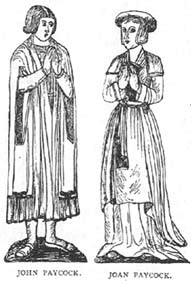

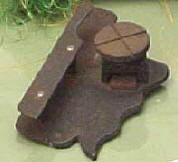
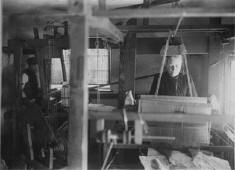
|
Velvet shears. They have a cranked handle to avoid touching the 'pile' |
A velvet cutter
|
The Musts, the last Coggeshall velvet weavers, at their looms in their home in Tilkey |
